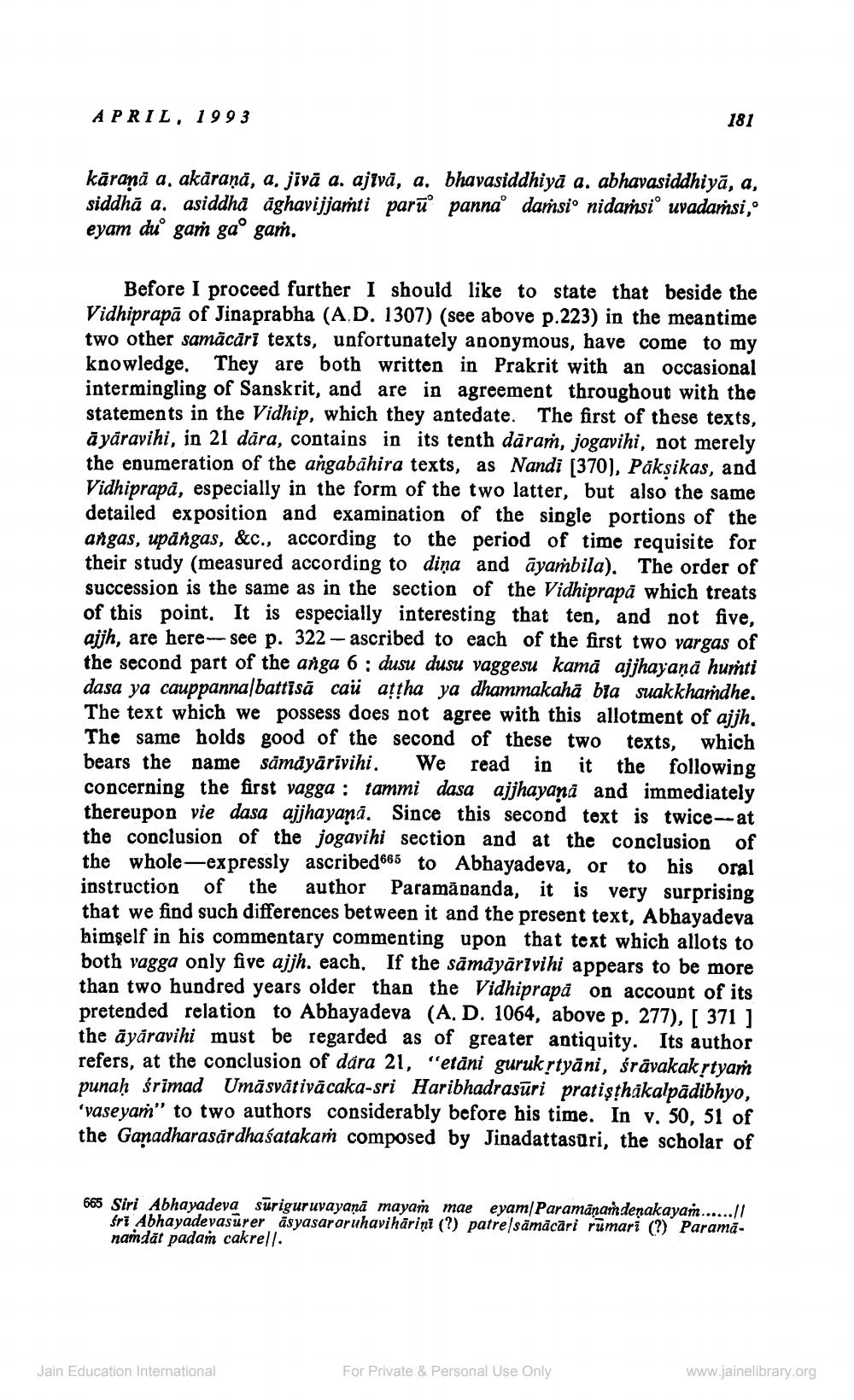________________
APRIL, 1993
kāranṇā a, akāraṇā, a, jīvā a. ajivä, a. bhavasiddhiya a. abhavasiddhiyā, a, siddhā a. asiddha aghavijjamti paru panna damsi nidamsi uvadamsi, eyam du gam ga° gaṁ.
181
Before I proceed further I should like to state that beside the Vidhiprapa of Jinaprabha (A.D. 1307) (see above p.223) in the meantime two other samācārī texts, unfortunately anonymous, have come to my knowledge. They are both written in Prakrit with an occasional intermingling of Sanskrit, and are in agreement throughout with the statements in the Vidhip, which they antedate. The first of these texts, äyäravihi, in 21 dāra, contains in its tenth däraṁ, jogavihi, not merely the enumeration of the angabahira texts, as Nandi [370], Pākṣikas, and Vidhiprapa, especially in the form of the two latter, but also the same detailed exposition and examination of the single portions of the angas, upangas, &c., according to the period of time requisite for their study (measured according to dina and ayambila). The order of succession is the same as in the section of the Vidhiprapa which treats of this point. It is especially interesting that ten, and not five, ajjh, are here- see p. 322- ascribed to each of the first two vargas of the second part of the anga 6: dusu dusu vaggesu kamā ajjhayaṇā humti dasa ya cauppanna/battisă cau aṭṭha ya dhammakaha bla suakkhamdhe. The text which we possess does not agree with this allotment of ajjh. The same holds good of the second of these two texts, which bears the name sämāyārivihi. We read in it the following concerning the first vagga: tammi dasa ajjhayana and immediately thereupon vie dasa ajjhayana. Since this second text is twice--at the conclusion of the jogavihi section and at the conclusion of the whole-expressly ascribed665 to Abhayadeva, or to his oral instruction of the author Paramananda, it is very surprising that we find such differences between it and the present text, Abhayadeva himself in his commentary commenting upon that text which allots to both vagga only five ajjh. each. If the sāmāyārtvihi appears to be more than two hundred years older than the Vidhiprapa on account of its pretended relation to Abhayadeva (A. D. 1064, above p. 277), [371] the āyāravihi must be regarded as of greater antiquity. Its author refers, at the conclusion of dára 21, "etāni gurukṛtyāni, śrāvakakṛtyaṁ punaḥ śrimad Umāsvätivācaka-sri Haribhadrasuri pratiṣṭhakalpädibhyo, 'vaseyam" to two authors considerably before his time. In v. 50, 51 of the Ganadharasärdhasatakam composed by Jinadattasuri, the scholar of
665 Siri Abhayadeva suriguruvayana mayam mae eyam/Paramāṇamdenakayam......!! fri Abhayadevasurer äsyasararuhavihāriņi (?) patre/sämācāri rumari (?) Paramanamdat padam cakrell.
Jain Education International
For Private & Personal Use Only
www.jainelibrary.org




